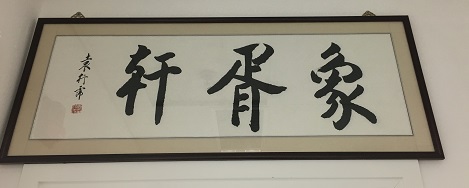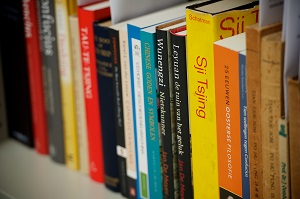
The “Xiangxu” entry under the section of “Qiuguan sikou” (Ministry of Justice) collected in Zhouli (The Rites of Zhou) noted that, “The xiàngxū [interpreting-functionaries] are responsible for receiving the envoys of the tribes of Man, Yi, Min, He, Rong and Di. They are charged with conveying the words of the King and explaining his meanings to the envoys so that harmonious relations with these tribes may be maintained.” (translated by Martha P. Y. Cheung [2006:43]) In other words, Xiangxu are interpreting officials whose functions are to receive, look after and communicate with emissaries from all sides. Accordingly, the Xiangxu Studio houses mainly translations of Chinese classics with a variety of more than fifty languages being used in the Continent, the Americas and Asia, including some of the rarest early translations. As the old saying goes, “The grind-stones from other hills can be used to polish jades.” Through the perspective of the other, one can gain a more objective understanding of the self. Some concepts or ideas in our culture are underappreciated simply because they are too familiar to us; however, seeing through the fresh eyes of oversea sinologists, we can be more reflective about the meanings of those concepts. The works that can be found in the studio are in general the cultural products resulted from the exchanges between Chinese and foreign civilizations, giving us a tangible feeling of the cultural exchange between ancient China and countries around the world.
Encyclopedia of Spiritual Culture of China (Энциклопедия Духовная культура Китая, 2006-2010; edited by Mikhail Leontievich Titarenko) is an encyclopedia on China complied by sinologists in Russia. The two countries vary considerably in culture, ethnicity and religion, nevertheless, as a neighbouring country, Russia has a long and rich tradition in Sinology. The ground-breaking Encyclopedia of New China (Энциклопедия нового Китая) was published in Russia as early as 1989, and the release of Encyclopedia of Spiritual Culture of China marks a major milestone in Russian Sinology. Divided into six volumes, the encyclopedia encompasses almost every aspect of Chinese spiritual culture, ranging from philosophy, religion, mythology, literature, linguistic to ideology, politics and law. The content for each area was selectively chosen, covering the most representative names, works, jargons and schools of thoughts alongside with traditional values.
